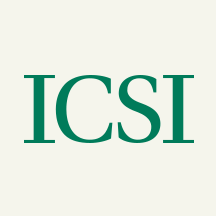
The DIAMOND (Depression Improvement Across Minnesota, Offering a New Direction) Initiative was pioneering work to change how care for patients with depression was delivered and paid for in primary care. The DIAMOND model was based on research (more than 37 randomized control trials) and built primarily around the components of the University of Washington AIMS Center’s IMPACT (Improving Mood: Providing Access to Collaborative Treatment) care model.
The components of DIAMOND include: use of a care manager and consulting psychiatrist to support the primary care provider, screening for depression using the PHQ-9, use of a registry to monitor patient progress, intensification of treatment, and relapse prevention.
Evaluation Studies
Through a National Institute of Mental Health (NIMH) grant, the HealthPartners Institute for Education and Research (HPIER) evaluated the DIAMOND model. The Mayo Clinic has also evaluated the effectiveness of the DIAMOND model in its own clinics (without external
comparisons). In these instances, the results of DIAMOND patients were compared with a control population in usual practice. The studies showed different results:
NIMH Study: Patients that received DIAMOND care as implemented did not have any statistically better depression outcomes than did those receiving usual care, although their satisfaction with care was higher. On the one hand, this study has a much more careful way of identifying a control population for comparison than the Mayo study below. On the other hand, it did not include Mayo patients (the largest subset of DIAMOND enrollees) due to difficulties in data sharing at the time of the study.
Mayo Studies: Mayo providers have done several studies on the patients seen in primary care at Mayo clinics. In each of those studies published, DIAMOND patients have achieved better response (16-28 percent better) and remission rates (20-34 percent better) based on the PHQ-9 than those receiving usual care. Control populations in these studies were retrospectively matched in all but one study where patients were recruited prospectively such that those in usual care were a combination of patients who were in clinics without DIAMOND available and those who did not enroll in DIAMOND for a variety of reasons. In that study, the DIAMOND response rate was 68.7 percent (versus 52.9 percent in usual care) and the remission rate was 52.7 percent (versus 31.3 percent in usual care) at six months.

